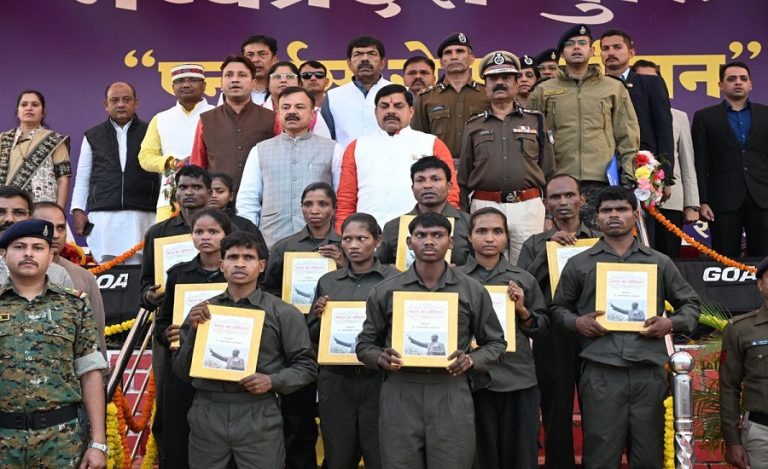New Delhi: India has taken a decisive step to fortify its orbital defence. The Indian government, via the Indian Space Research Organisation (ISRO) and its partners, has kicked off a blockbuster ₹27,000 crore, satellite bodyguard initiative aimed at building a protective shield for India’s satellites.
Background of Satellite Bodyguard Initiative
With more than a hundred satellites currently in orbit, India’s dependence on space assets has risen sharply — for communication, navigation (like NavIC), defence intelligence, weather forecasting and internet services.
A turning point emerged when, in mid-2024, a foreign satellite reportedly came within roughly 1 kilometre of an Indian satellite operating at an altitude of 500-600 km — a scenario described as a near-miss that underscored the vulnerability of India’s space systems.
In response, India approved a large-scale surveillance and protection programme: the launch of about 50 new advanced satellites by 2029, with the first of them expected as early as next year.
The concept of “Satellite Bodyguard” is part of that larger umbrella.
What is Satellite Bodyguard Initiative
The initiative is being led by ISRO, the national space agency of India, in conjunction with the Department of Space and other defence-space partner agencies.
While specific officers have not been publicly named in detail, the initiative falls under India’s space defence architecture and space situational awareness (SSA) efforts.
It is pitched as the first indigenous space protection mission to guard Indian space assets from adversarial threats and collisions.
The “Satellite Bodyguard” is designed to provide real-time threat detection, precise 3D mapping of nearby orbital objects using LiDAR and other sensors, and to work alongside a ground-based surveillance system to monitor and, if needed, reposition or protect high-value assets.
Importance of Satellite Bodyguard Initiative
The importance of this move cannot be overstated:
Strategic security: Satellites are critical for India’s defence, intelligence, navigation and communication. Protecting these assets safeguards national sovereignty.
Economic value: Launching and maintaining satellites costs billions of rupees; loss or damage of an asset would be a major financial setback.
Global space environment: As more nations deploy satellites and adversarial manoeuvres increase, India must build resilience to stay competitive and secure.
Technological leadership: Developing such escort/protection satellites places India among the advanced space-faring nations capable of active space defence.
Key Challenges to Watch
Despite the ambition, there are several hurdles:
Technological complexity: Escort satellites require advanced sensors, autonomous manoeuvring, LiDAR mapping, precise orbital control — technologies India is still maturing.
Budget & sustainability: ₹27,000 crore is a large sum, and maintaining a constellation of escort satellites plus ground infrastructure implies ongoing expenditure.
Orbital congestion & debris risk: Deploying more satellites increases traffic in space; if not managed well, could raise risk of collisions or debris.
Geopolitical optics: Other nations may view such defensive satellites as militarisation of space, possibly triggering an arms-race in orbit.
Cyber and space-domain threats: Satellites face threats not just from physical proximity but from cyberattacks, jamming, spoofing and debris — the protection system must be multi-layered.
Key Implications
For India’s defence posture: This mission strengthens India’s space defence capabilities and adds a protective layer over sensitive assets.
For regional strategic balance: As India raises space defence readiness, neighbouring countries and global powers will watch closely, potentially accelerating space assets deployment.
For private sector & startups: The mission opens up business opportunities for Indian space start-ups in tracking, LiDAR, SSA tech and autonomous orbiting systems.
For space sustainability: If managed responsibly, the initiative could elevate India’s role in promoting safe, responsible use of outer space; mismanaged, it might add to orbital clutter.
Way Forward
To ensure success, the following steps are key:
- Ramping up LiDAR satellites, ground radars, optical tracking, and autonomous manoeuvring systems.
- Involving Indian startups and private space firms to accelerate innovation and cost-efficiency.
- Expanding tracking networks, integrating data from ground sensors and satellites, and sharing information across agencies.
- Ensure the released funds are used efficiently and timelines (first launches by next year) are met.
- Participate in global forums such as United Nations Office for Outer Space Affairs (UNOOSA) and Inter‑Agency Space Debris Coordination Committee (IADC) to promote responsible behaviour in orbit.
- Keep the mission explicitly non-offensive, focused on protection and deterrence, to reduce the risk of an arms-race in space.



























